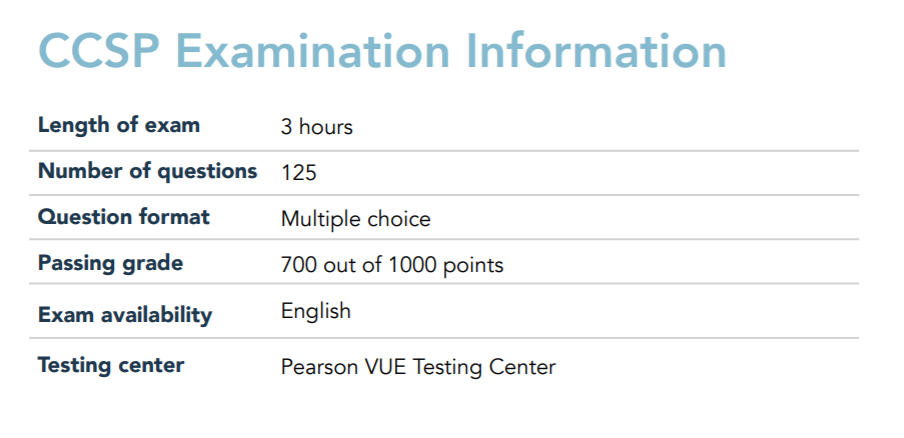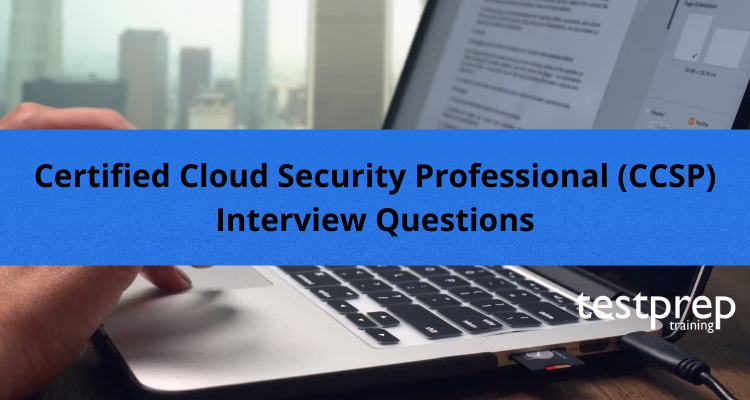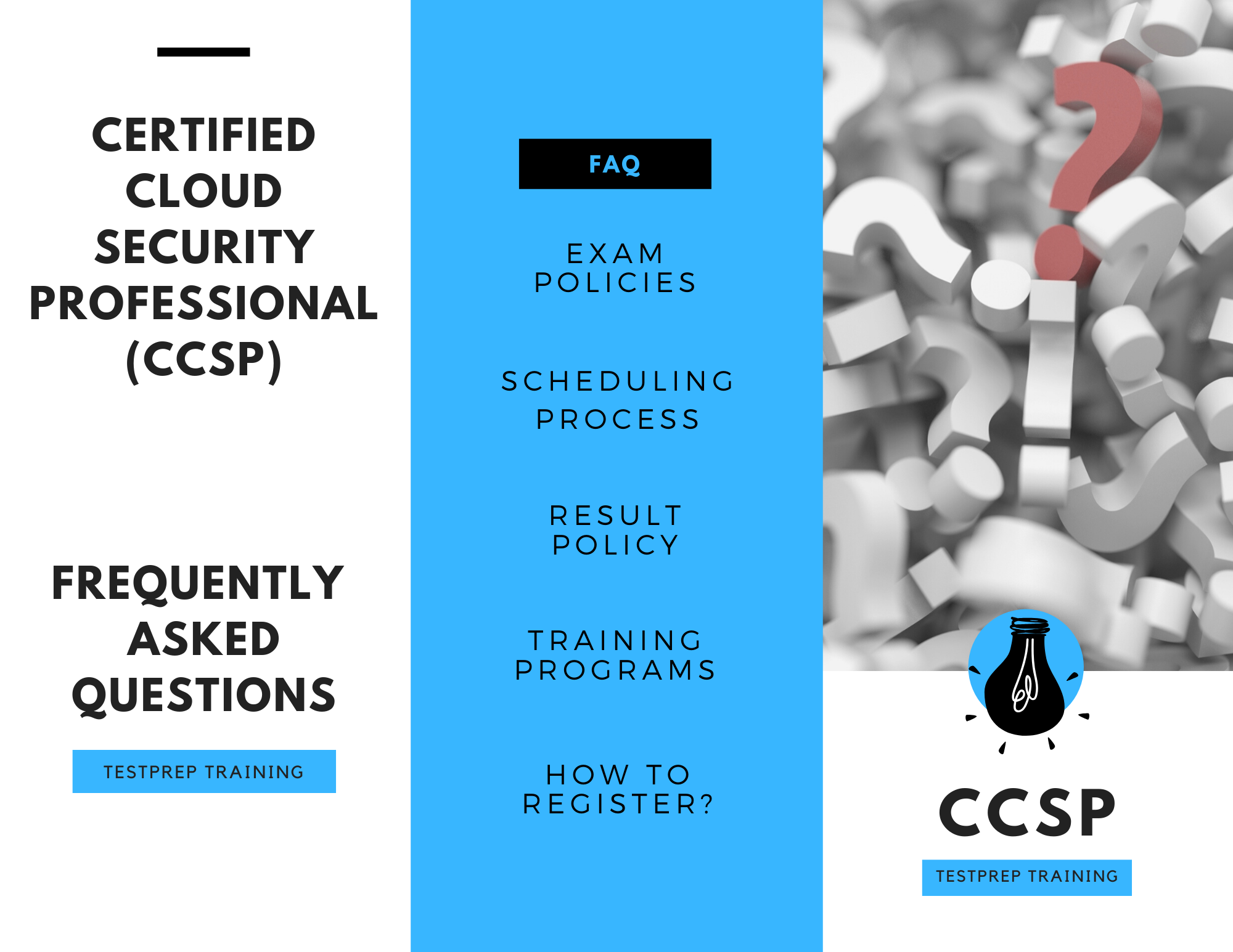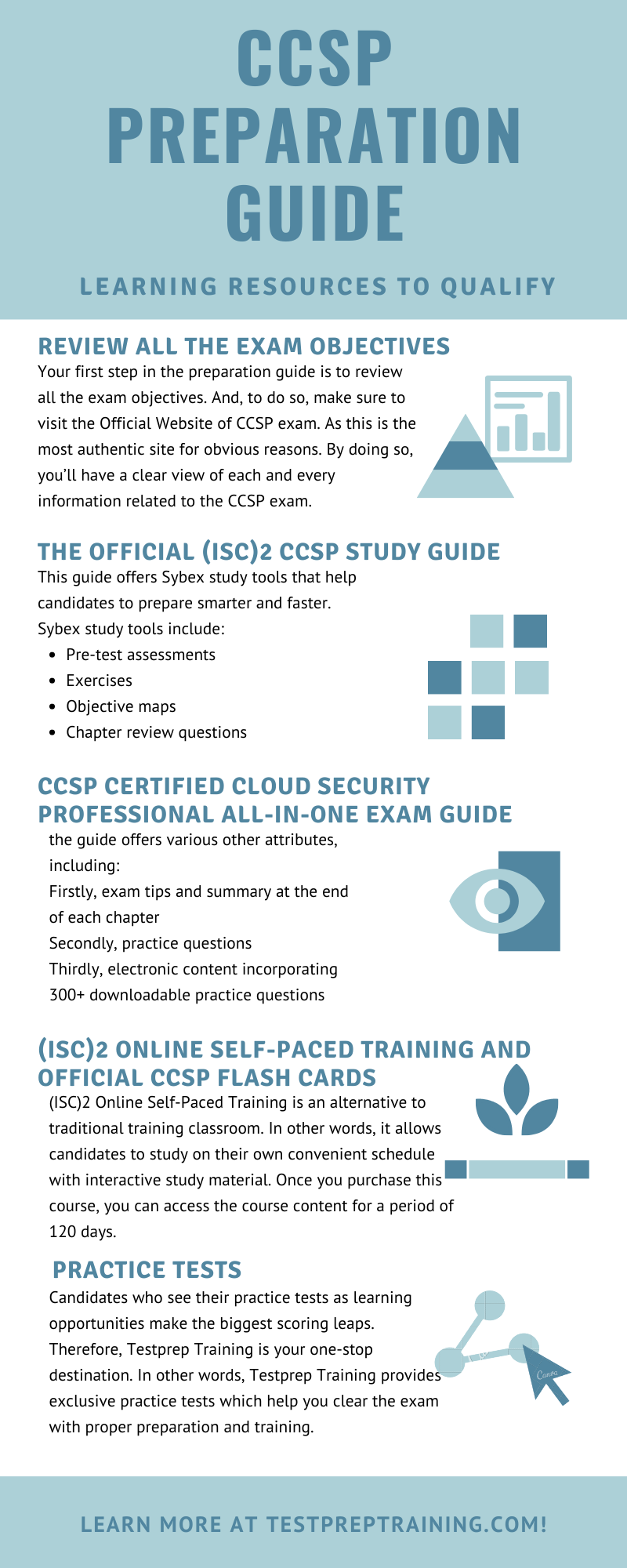CCSP – Certified Cloud Security Professional
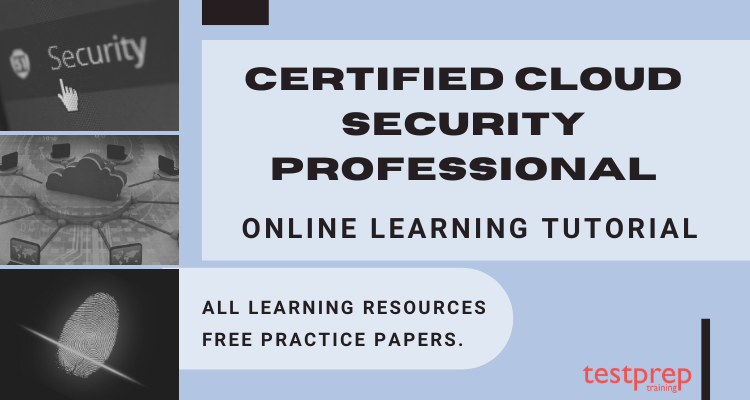
The Certified Cloud Security Professional (CCSP) certification ensures that cloud security specialists have the needed expertise, abilities, and skills in cloud security design, implementation, architecture, operations, controls, and compliance with regulatory frameworks. A CCSP implements information security expertise to a cloud computing environment and demonstrates competence in cloud security architecture, design, progress, and service orchestration. This professional capability is validated against a globally acknowledged body of knowledge. The CCSP is an outstanding credential that complements and develops upon existing credentials and educational programs, including (ISC)²’s Certified Information Systems Security Professional (CISSP) and CSA’s Certificate of Cloud Security Knowledge (CCSK).
Experience Requirements
Candidates must have a least of 5 years total paid work experience in information technology, of which 3 years must be in information security and 1 year in 1 or more of the 6 regions of the CCSP. Earning (ISC)²’s CISSP credential can be replaced for the entire CCSP experience requirement.
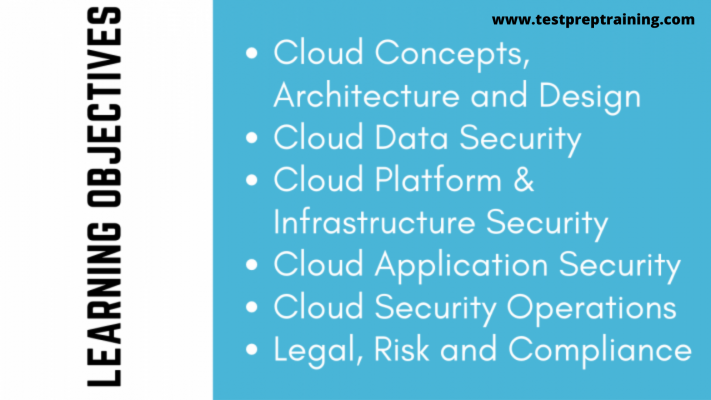
CCSP Exam Format
Details are important when you think of taking the exam. The CCSP Exam Difficulty is quite high, therefore, it is always good to have exam details beforehand.
The exam is intense and can take you three hours to complete. Further, the exam comprises 125 multiple-choice questions. Also, the CCSP Exam Questions are available in English language only. Above all, you will need to accumulate a minimum of seven hundred out of a thousand points to achieve the CCSP Exam Passing Score.
CCSP Exam Outline
The CCSP exam course provides descriptive details about the topics covered in the exam. Also, it helps you familiarise with the CCSP Exam Pattern. The exam topics are:
Domain 1: Cloud Concepts, Architecture and Design 17%
Understand Cloud Computing Concepts
- Cloud computing definitions
- Cloud computing roles and responsibilities (e.g., cloud service customer, cloud service provider, cloud service partner, cloud service broker, regulator)
- Key cloud computing characteristics (e.g., on-demand self-service, broad network access, multi-tenancy, rapid elasticity and scalability, resource pooling, measured service)
- Building block technologies (e.g., virtualization, storage, networking, databases, orchestration)
Describe Cloud Reference Architecture
- Cloud Computing Activities
- Cloud Service Capabilities (e.g., application capability types, platform capability types, infrastructure capability types)
- Then, Cloud Service Categories, Infrastructure as a Service (IaaS), Platform as a Service (PaaS))
- Cloud deployment models (e.g., public, private, hybrid, community, multi-cloud)
- Cloud shared considerations (e.g., interoperability, portability, reversibility, availability, security, privacy, resiliency, performance, governance, maintenance and versioning, service levels and service-level agreements (SLA), auditability, regulatory, outsourcing)
- Impact of related technologies (e.g., data science, machine learning, artificial intelligence (AI), blockchain, Internet of Things (IoT), containers, quantum computing, edge computing, confidential computing, DevSecOps)
Understand Security Concepts Relevant to Cloud Computing
- Cryptography and key management
- Identity and access control (e.g., user access, privilege access, service access)
- Data and media sanitization (e.g., overwriting, cryptographic erase)
- Network security (e.g., network security groups, traffic inspection, geofencing, zero trust network)
- Virtualization security (e.g., hypervisor security, container security, ephemeral computing, serverless technology)
- Common threats
- Security hygiene (e.g., patching, baselining)
Understand the Design Principles of Secure Cloud Computing
- Cloud secure data lifecycle
- Cloud-based business continuity (BC) and disaster recovery (DR) plan
- Business impact analysis (BIA) (e.g., cost-benefit analysis, return on investment (ROI))
- Functional security requirements (e.g., portability, interoperability, vendor lock-in)
- Security considerations and responsibilities for different cloud categories (e.g., Software as a Service (SaaS), Infrastructure as a Service (IaaS), Platform as a Service (PaaS))
- Cloud design patterns (e.g., SANS security principles, Well-Architected Framework, Cloud Security Alliance (CSA) Enterprise Architecture)
- DevOps security
Evaluate Cloud Service Providers
- Verification against criteria (e.g., International Organization for Standardization/International Electrotechnical Commission (ISO/IEC) 27017, Payment Card Industry Data Security Standard (PCI DSS))
- System/subsystem product certifications (e.g., Common Criteria (CC), Federal Information Processing Standard (FIPS) 140-2)
Domain 2: Cloud Data Security 20%
Describe Cloud Data Concepts
- Cloud Data Life Cycle Phases
- Data Dispersion
- Data flows
Design and Implement Cloud Data Storage Architectures
- Storage types (e.g., long-term, ephemeral, raw storage)
- Threats to storage types
Design and Apply Data Security Technologies and Strategies
- Encryption and key management
- Hashing
- Data obfuscation (e.g., masking, anonymization)
- Tokenization
- Data loss prevention (DLP)
- Keys, secrets and certificates management
Implement Data Discovery
- Structured data
- Unstructured data
- Semi-structured data
- Data location
Implement Data Classification
- Data classification policies
- Data mapping
- Data labeling
Design and Implement Information Rights Management (IRM)
- Objectives (e.g., data rights, provisioning, access models)
- Appropriate Tools (e.g., issuing and revocation of certificates)
Plan and Implement Data Retention, Deletion and Archiving Policies
- Data Retention Policies
- Then, Data Deletion Procedures and Mechanisms
- Data Archiving Procedures and Mechanisms
- Legal Hold
Design and Implement Auditability, Traceability and Accountability of Data Events
- Definition of Event Sources and Requirement of Identity Attribution
- Logging, Storage and Analysis of Data Events
- Chain of Custody and Non-repudiation
Domain 3: Cloud Platform & Infrastructure Security 17%
Comprehend Cloud Infrastructure Components
- Physical Environment
- Network and Communications
- Compute
- Virtualization
- Storage
- Management Plane
Design a Secure Data Center
- Logical Design (e.g., tenant partitioning, access control)
- Physical Design (e.g. location, buy or build)
- Environmental design (e.g., Heating, Ventilation, and Air Conditioning (HVAC), multi-vendor pathway connectivity)
- Design resilient
Analyze Risks Associated with Cloud Infrastructure
- Risk Assessment and Analysis
- Cloud Vulnerabilities, Threats and Attacks
- Risk mitigation strategies
Design and Plan Security Controls
- Physical and environmental protection (e.g., on-premises)
- System, storage and communication protection
- Identification, authentication and authorization in cloud environments
- Audit mechanisms (e.g., log collection, correlation, packet capture)
Plan Disaster Recovery (DR) and Business Continuity (BC)
- Business continuity (BC) / disaster recovery (DR) strategy
- Business requirements (e.g., Recovery Time Objective (RTO), Recovery Point Objective (RPO), recovery service level)
- Creation, implementation and testing of plan
Domain 4: Cloud Application Security 17%
Advocate Training and Awareness for Application Security
- Cloud Development Basics
- Common Pitfalls
- Common Cloud vulnerabilities (e.g., Open Web Application Security Project (OWASP) Top-10, SANS Top-25)
Describe the Secure Software Development Life Cycle (SDLC) Process
- Business Requirements
- Phases and methodologies (e.g., design, code, test, maintain, waterfall vs. agile)
Apply the Secure Software Development Life Cycle (SDLC)
- Cloud-specific risks
- Threat modeling (e.g., Spoofing, Tampering, Repudiation, Information Disclosure, Denial of Service, and Elevation of Privilege (STRIDE), Damage, Reproducibility, Exploitability, Affected Users, and Discoverability (DREAD), Architecture, Threats, Attack Surfaces, and Mitigations (ATASM), Process for Attack Simulation and Threat Analysis (PASTA))
- Avoid common vulnerabilities during development
- Secure coding (e.g., Open Web Application Security Project (OWASP) Application Security
- Verification Standard (ASVS), Software Assurance Forum for Excellence in Code (SAFECode))
- Software configuration management and versioning
Apply Cloud Software Assurance and Validation
- Functional and non-functional testing
- Security testing methodologies (e.g., blackbox, whitebox, static, dynamic, Software Composition Analysis (SCA), interactive application security testing (IAST))
- Quality assurance (QA)
- Abuse case testing
Use Verified Secure Software
- Securing application programming interfaces (API)
- Supply-chain management (e.g., vendor assessment)
- Third-party software management (e.g., licensing)
- Validated open-source software
Comprehend the Specifics of Cloud Application Architecture
- Supplemental security components (e.g., web application firewall (WAF), Database Activity Monitoring (DAM), Extensible Markup Language (XML) firewalls, application programming interface (API) gateway)
- Cryptography
- Sandboxing
- Application virtualization and orchestration (e.g., microservices, containers)
Design Appropriate Identity and Access Management (IAM) Solutions
- Federated identity
- Identity providers (IdP)
- Single sign-on (SSO)
- Multi-factor authentication (MFA)
- Cloud access security broker (CASB)
- Secrets management
Domain 5: Cloud Security Operations 16%
Implement and Build Physical and Logical Infrastructure for Cloud Environment »
- Hardware specific security configuration requirements (e.g., hardware security module (HSM) and Trusted Platform Module (TPM))
- Installation and configuration of management tools
- Virtual hardware specific security configuration requirements (e.g., network, storage, memory, central processing unit (CPU), Hypervisor type 1 and 2)
- Installation of guest operating system (OS) virtualization toolsets
Operate Physical and Logical Infrastructure for Cloud Environment
- Access controls for local and remote access (e.g., Remote Desktop Protocol (RDP), secure terminal access, Secure Shell (SSH), console-based access mechanisms, jumpboxes, virtual client)
- Secure network configuration (e.g., virtual local area networks (VLAN), Transport Layer Security (TLS), Dynamic Host Configuration Protocol (DHCP), Domain Name System Security Extensions (DNSSEC), virtual private network (VPN))
- Network security controls (e.g., firewalls, intrusion detection systems (IDS), intrusion prevention systems (IPS), honeypots, vulnerability assessments, network security groups, bastion host)
- Operating system (OS) hardening through the application of baselines, monitoring and remediation (e.g., Windows, Linux, VMware)
- Patch management
- Infrastructure as Code (IaC) strategy
- Availability of clustered hosts (e.g., distributed resource scheduling, dynamic optimization, storage clusters, maintenance mode, high availability (HA))
- Availability of guest operating system (OS)
- Performance and capacity monitoring (e.g., network, compute, storage, response time)
- Hardware monitoring (e.g., disk, central processing unit (CPU), fan speed, temperature)
- Configuration of host and guest operating system (OS) backup and restore functions
- Management plane (e.g., scheduling, orchestration, maintenance)
Implement operational controls and standards (e.g., Information Technology Infrastructure Library (ITIL), International Organization for Standardization/International Electrotechnical Commission (ISO/IEC) 20000-1)
- Incident management
- Problem management
- Release management
- Deployment management
- Configuration management
- Service level management
- Availability management
- Capacity management
Support Digital Forensics
- Forensic Data Collection Methodologies
- Evidence Management
- Collect, Acquire and Preserve Digital Evidence
Manage Communication with Relevant Parties
- Vendors
- Customers
- Partners
- Regulators
- Other Stakeholders
Manage Security Operations
- Forensic data collection methodologies
- Evidence management
- Collect, acquire, and preserve digital evidence
- Security operations center (SOC)
- Intelligent monitoring of security controls (e.g., firewalls, intrusion detection systems (IDS), intrusion prevention systems (IPS), honeypots, network security groups, artificial intelligence (AI))
- Log capture and analysis (e.g., security information and event management (SIEM), log management)
- Incident management
- Vulnerability assessments
Domain 6: Legal, Risk and Compliance 13%
Articulate Legal Requirements and Unique Risks within the Cloud Environment
- Conflicting international legislation
- Evaluation of legal risks specific to cloud computing
- Legal framework and guidelines
- eDiscovery (e.g., International Organization for Standardization/International Electrotechnical Commission (ISO/IEC) 27050, Cloud Security Alliance (CSA) Guidance)
- Forensics requirements
Understand Privacy Issues
- Difference between contractual and regulated private data (e.g., protected health information (PHI), personally identifiable information (PII))
- Country-specific legislation related to private data (e.g., protected health information (PHI), personally identifiable information (PII))
- Jurisdictional differences in data privacy
- Standard privacy requirements (e.g., International Organization for Standardization/International Electrotechnical Commission (ISO/IEC) 27018, Generally Accepted Privacy Principles (GAPP), General Data Protection Regulation (GDPR))
- Privacy Impact Assessments (PIA)
Understand Audit Process, Methodologies, and Required Adaptations for a Cloud Environment
- Internal and external audit controls
- Impact of audit requirements
- Identify assurance challenges of virtualization and cloud
- Types of audit reports (e.g., Statement on Standards for Attestation Engagements (SSAE), Service Organization Control (SOC), International Standard on Assurance Engagements (ISAE))
- Restrictions of audit scope statements (e.g., Statement on Standards for Attestation Engagements (SSAE), International Standard on Assurance Engagements (ISAE))
- Gap analysis (e.g., control analysis, baselines)
- Audit planning
- Internal information security management system
- Internal information security controls system
- Policies (e.g., organizational, functional, cloud computing)
- Identification and involvement of relevant stakeholders
- Specialized compliance requirements for highly-regulated industries (e.g., North American Electric Reliability Corporation / Critical Infrastructure Protection (NERC / CIP), Health Insurance Portability and Accountability Act (HIPAA), Health Information Technology for Economic and Clinical Health (HITECH) Act, Payment Card Industry (PCI))
- Impact of distributed information technology (IT) model (e.g., diverse geographical locations and crossing over legal jurisdictions)
Understand the Implications of Cloud to Enterprise Risk Management
- Assess providers risk management programs (e.g., controls, methodologies, policies, risk profile, risk appetite)
- Difference between data owner/controller vs. data custodian/processor
- Regulatory transparency requirements (e.g., breach notification, Sarbanes-Oxley (SOX), General Data Protection Regulation (GDPR))
- Risk treatment (i.e., avoid, mitigate, transfer, share, acceptance)
- Different risk frameworks
- Metrics for risk management
- Assessment of risk environment (e.g., service, vendor, infrastructure, business)
Understand Outsourcing and Cloud Contract Design
- Business requirements (e.g., service-level agreement (SLA), master service agreement (MSA), statement of work (SOW))
- Vendor management (e.g., vendor assessments, vendor lock-in risks, vendor viability, escrow)
- Contract management (e.g., right to audit, metrics, definitions, termination, litigation, assurance, compliance, access to cloud/data, cyber risk insurance)
- Supply-chain management (e.g., International Organization for Standardization/International Electrotechnical Commission (ISO/IEC) 27036)
The Whole Certification Process
Book the Exam
Booking your (ISC)² exam is the first step in building a successful and long-term security career. Moreover, earning an (ISC)² certification validates your skills as a security professional in the eyes of hiring managers and your peers.
For CCSP Exam Schedule, follow the steps below:
- Firstly, create an account with Pearson VUE, the exclusive global administrator of all (ISC)² exams.
- Secondly, select the (ISC)² certification exam you are pursuing.
- Thirdly, schedule your exam and testing location with Pearson VUE.
Request for Special Accommodation
For instance, if you require special accommodations for the exam, you can request one through (ISC)².
Reasonable and appropriate accommodations for the exam are only provided to people who have demonstrated a need for test accommodations. Therefore, if you wish to request an accommodation, complete the accommodation form and return it to (ISC)² prior to registering for your exam. All you need is a list of the following:
- Firstly, an explanation of the accommodations you need
- Secondly, documentation supporting the accommodation
- Further, the exam you want to take
- Lastly, the exam location
Note: The basis of test accommodations is to provide examinees with full access to the test. In other words, they don’t offer a guarantee of improved performance or test completion.
Reschedule the Exam
You can reschedule your CCSP exam if you failed to take it on the scheduled date and time. In order to reschedule or cancel your exam appointment, contact Pearson VUE:
- Online at least 48 hours before the exam
- By phone at least 24 hours before the exam
Above all, Pearson VUE charges a reschedule fee of USD$50 and a cancellation fee of USD$100.
Can you retake the exam?
The last thing on this earth would be to retake the exam. Nobody ever wishes to get flunk in the exam. However, failure can happen to anyone. Similarly, if you fail the CCSP exam in your first attempt, you can retake it. Yes, you heard it right.
Pearson VUE grants a chance to retake your failed exam. Moreover, you can sit the exam up to three times a year. The following are the rules in order to retake the exam:
- If you don’t pass the exam the first time, you can retest after 90 days of the actual exam
- Similarly, if you don’t pass a second time, you can retest after an additional 90 days
- Further, if you don’t pass a third time, you can retest after 180 days
Note: Every exam take is full price, despite whether it’s a retake or a first-time take.
Recertification of the Exam
CCSP certification like every other certification requires maintenance. To clarify, CCSP certification requires to be recertified in order to maintain its status.
You can recertify the exam if you’ve become decertified due to:
- Firstly, not meeting your required number of continuing professional education credits.
- Secondly, having the time limit on your endorsement expires.
Certified Cloud Security Professional (CCSP) Interview Questions
Exam Policies
CCSP provides exam policies to support the candidates by providing every detail related to the certification program. However, candidates studying for the CCSP exam should first go through and understand the (ISC)2 Certification exam policies. On this page, the candidates will get information about after the exam or before exam procedures. This includes the exam retaking process, rules to be followed during the exam time, and other information about the exams and its testing centres.
While preparing for the CCSP exam you will be solely responsible for understanding and complying with CCSP exam policies, together with the specified exam delivery provider’s policies and procedures.
For more queries, visit the CCSP FAQ Page
Success Guide: CCSP Guide
To succeed in your journey, and achieve your desired goal, preparation resources always come in handy. All the resources mentioned here will allow the candidate to build a stronger foundation for the exam. This way there are more chances of them to qualify with the desired result. If you yearn for the perfect score, below mentioned CCSP Exam Preparation resources is all you need to qualify the CCSP exam.
Review all the Exam Objectives
Your first step in the CCSP Exam Guide is to review all the exam objectives. And, to do so, make sure to visit the Official Website of CCSP exam. As this is the most authentic site for obvious reasons. By doing so, you’ll have a clear view of each and every information related to the CCSP exam. So, make sure, to begin with, this step.
Download Exam skill Outline
After this, you must download the exam skill outline available on the official website itself. Downloading the outline will provide you with the updated exam outline. All the domains and their subtopics are listed down in the outline. Keep in mind not to rely on any other website except the official website itself. Since the exam is updated after every few years hence the official website is your door to reliable information.
The Official (ISC)2 CCSP Study Guide
The study guide is an official publication of (ISC)2. This guide offers Sybex study tools that help candidates to prepare smarter and faster. Moreover, it allows them to feel comfortable and confident on the exam day. Sybex study tools include:
- Pre-test assessments
- Exercises
- Objective maps
- Chapter review questions
In addition, this study guide also offers a Sybex interactive online learning environment that subsumes:
- Two complete practice exams
- Hundreds of flashcards
- Access to a PDF glossary
CCSP Certified Cloud Security Professional All-in-One Exam Guide
The CCSP Certified Cloud Security Professional All-in-One Exam Guide is authored by Daniel Carter and established by both (ISC)2 and CSA. This self-study guide provides 100% coverage of all the six domains of CCSP exam. Moreover, every subject in this guide is clearly explained and featured accurately.
In addition, the guide offers various other attributes, including:
- Firstly, exam tips and summary at the end of each chapter
- Secondly, CCSP Exam Questions And Answers
- Thirdly, electronic content incorporating 300+ downloadable practice questions
ISC)2 Online Self-Paced Training and Official CCSP Flash Cards
(ISC)2 Online Self-Paced Training is an alternative to traditional training classroom. In other words, it allows candidates to study on their own convenient schedule with interactive study material. Once you purchase this course, you can access the course content for a period of 120 days.
Similarly, with Official CCSP Flash Cards, CCSP aspirants can study anytime and anywhere for their CCSP certification exam. While performing the test, you will get immediate feedback about whether your answer is correct or not. Moreover, it has the ability to flag individual cards for a separate study. The cards are sectioned for each domain to make learning easier. Above all, this learning tool is the latest, unique, and interactive way to test your knowledge about the cloud security subject.
Join a Study Group/Online Forum
Online forums and study groups are a great way to prepare for the CCSP exam. Therefore, feel free to get in touch with other candidates through study forums or online groups to ask a question related to the topic you’re having difficulty with.
However, it’s not something you have to join. It’s just something very subjective. Not to mention, these online groups help you stay equated with the other people who are also walking through the same path as yours. Moreover, you can also ask a question related to the topic you’re having difficulty with.
Practice Tests
In the age of the Internet, practice tests have gone digital. In other words, pen and paper have left behind and you can perform practice tests sitting in your living room. Tests have more value than you can ever imagine Therefore, you are recommended to perform CCSP Mock Exam and evaluate yourself.
Candidates who see their practice tests as learning opportunities make the biggest scoring leaps. Therefore, Testprep Training is your one-stop destination. In other words, Testprep Training provides exclusive practice tests which help you clear the exam with proper preparation and training.
Master your certification with the all-new learning tutorial. Prepare for CCSP exam and become Certified Cloud Security Professional now!

